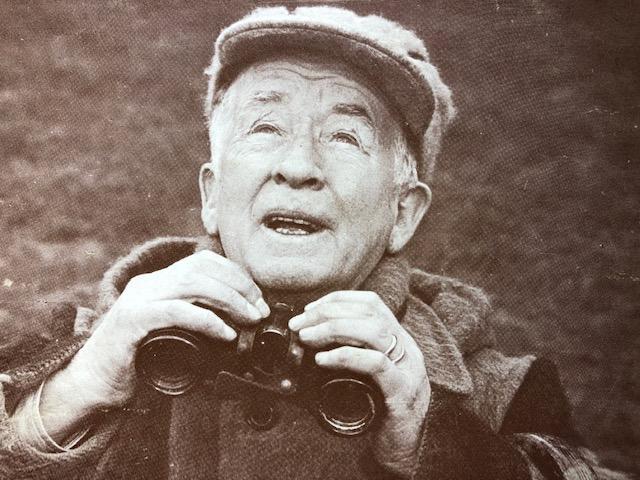This may be a golden age for a lot of disciplines — scripted television, Y.A. novels, disinformation — but you wouldn’t exactly call it a golden age of the book cover.
Maybe you could call it a golden age of book covers designed to be seen on an iPhone: bright colors, bold images, no white space remaining, and then, most important, giant typefaces you can’t miss on a small screen.
I say this because my aunt just lent me a beauty of a throwback, a book-as-object, its title small in a faint orange hue: “Outdoors With Gregory Clark.” Beneath that, a stunningly detailed pen-and-ink portrait by one Alan Magee, sepia-toned, showing the old Canadian newspaperman smiling back at us, encircled by creatures of his fascination: deer, otter, hawk, frog.
Almost as good is the back cover, fantastically devoid of all blurbs, just a photo of our man in letters, binoculars on their way to his eyes as he excitedly spies a bird on a branch.
It’s from 1971, six years before Clark died. His tenure in the business dates to 1911 at The Toronto Star. And if that periodical makes you think of Ernest Hemingway, word is the two became friendly after Clark told him to give up this fiction foolishness and focus on the news.
Clark later moved on to The Montreal Standard, but he’s best known for his five-times-a-week columns, under the heading “Gregory Clark’s Packsack,” which ran from 1948 to 1962 in syndication, with a circulation of more than three million, making him “the most widely read Canadian ever,” according to the jacket copy.
I’d never heard of him.
But, man, is he good. No wasted words. This book, drawn from the “Packsack” columns — each two pages tops, most just one, some only a half page — is organized seasonally: spring, summer, autumn, winter.
As it’s spring, I’m reading those pieces, which are heavy on the bird comment, and will hold off on the summer section till that season hits. (Not unlike the way I’m working through John Updike’s Rabbit cycle at the approximate age Updike was when writing them. Or was that Rabbit Angstrom’s age in each novel? Or are they in fact the same thing?)
What’s Clark like? One tongue-in-cheek column, “Survival of the Stupid,” takes to task the “drumming partridge” in search of a mate, and how that behavior instead so successfully draws a variety of predators, like the fox and the hawk.
“The wonder is that the race of partridge was not extinguished ages ago. . . . In the vainglory of the breeding season, so many species — the deer, the moose, the pheasant, the partridge — give themselves away to their enemies.”
“Yet the stupid survive and multiply. It is true amongst us humans, too. Maybe stupidity is the ideal towards which nature strives.”
Now more than ever.

